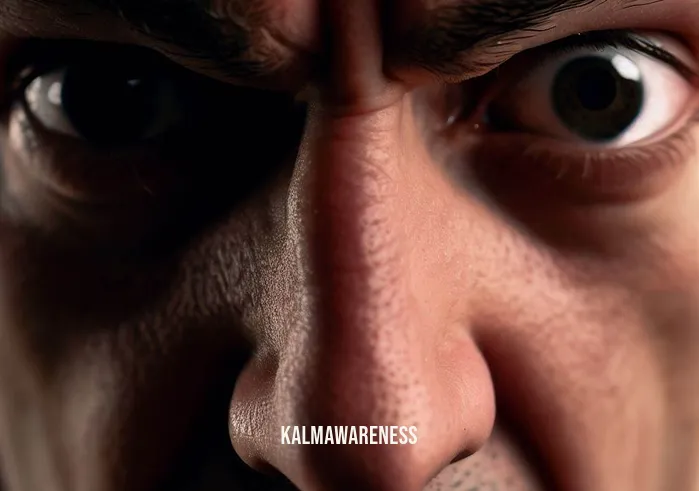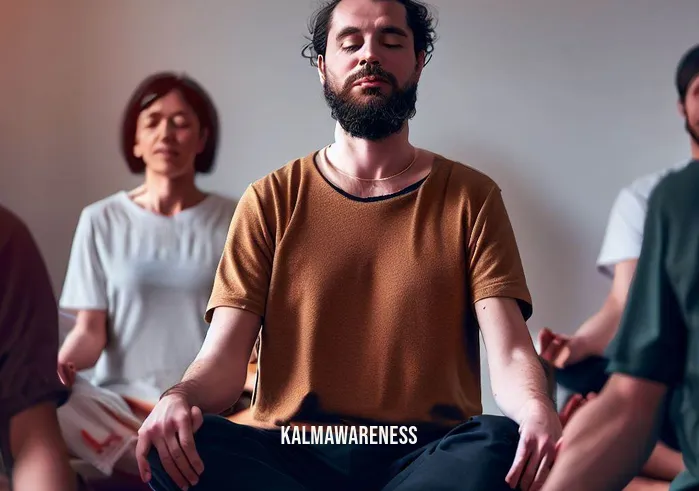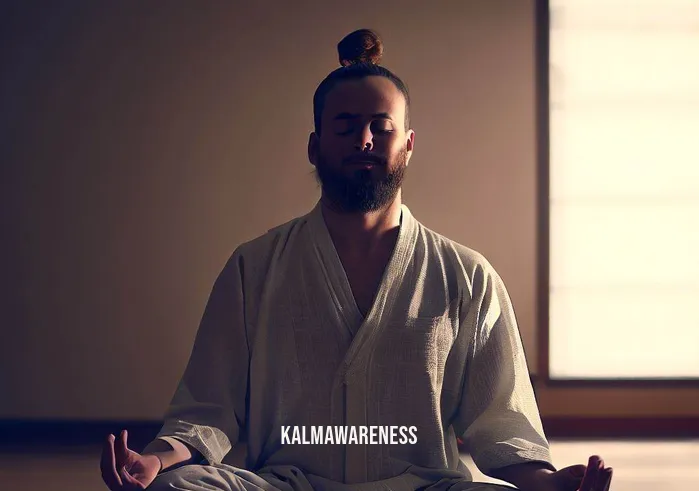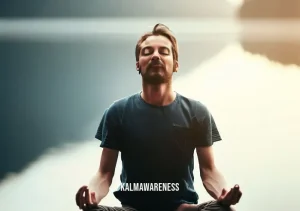The Convergence of Science and Spirituality: Understanding the Science of Meditation Book
The intersection of science and spirituality has always been a topic that arouses curiosity and debate. Few subjects epitomize this convergence more than the study of meditation. Over the years, meditation has moved from the realm of religious and spiritual practices into the limelight of scientific research. This transformation is eloquently detailed in the science of meditation book, a resource that combines the best of both worlds—research and spiritual wisdom. In the next few segments, we will delve into the intricate relationship between meditation and scientific domains such as research, neuroscience, techniques, mind-body interactions, and its benefits.
Research and the Evidence-Based Approach
Science demands evidence, and it’s only in recent years that meditation has started to catch up in this regard. Studies have demonstrated that the practice can produce measurable changes in the brain, emotional well-being, and even in cellular structures. The UCLA MARC Mindfulness research program is one of the leading centers involved in such pioneering studies. Their work helps to substantiate the findings discussed in the science of meditation book, bringing credibility to claims that were once considered purely anecdotal.
The Neuroscientific Angle
One of the most compelling aspects of this subject is the role of neuroscience in validating meditation. Scientists have been particularly interested in the amygdala, the brain region involved in emotional processing. Studies indicate that regular meditation can trigger amygdala healing, leading to better emotional regulation and reduced stress.
Techniques and the Art of Breathing
Breathing plays a crucial role in most meditation techniques, and scientific literature has begun to explore its physiological and psychological effects. From Bruce Lee’s meditation practices to ancient meditative Chinese disciplines, the importance of breathing cannot be overstated. The book extensively discusses the role of breathing techniques in meditation, including practices that are designed to harness the healing force within us.
Mind-Body Connection
The relationship between the mind and the body is an ancient concept that modern science is beginning to understand more deeply. From mindful dog training to understanding how mindful healing works, the connection between our thoughts and physical health is undeniable. Even in areas such as pain management, there are innovative tips to take control and live well with chronic pain through the application of mindfulness and meditation.
Holistic Benefits of Meditation
Last but not least, the book covers the comprehensive benefits of practicing meditation. It’s not just about stress reduction or better emotional health. Meditation can affect us in multidimensional ways, from influencing our spiritual understanding of lower back pain to even intriguing subjects like astral projection. The 6-phase meditation technique, for instance, is a structured method designed to maximize these holistic benefits.
“Meditation is not just for relaxation; its primary purpose is to develop the capacity to respond skillfully and gracefully to life’s difficulties as well as its joys.”
— Shyalpa Tenzin Rinpoche
Why Continue Reading?
In the science of meditation book, you’ll find a wealth of knowledge that has the potential to transform your life. But that’s just the tip of the iceberg. As you continue reading the subsequent segments, we will dive deeper into each of these categories. We’ll explore how curiosity plays a role in mindfulness, why doctors are incorporating doctor’s meditation practices into their healing methods, and even how to perfect your meditative posture with insights on the importance of a straight spine in meditation.
In the next segment, we’ll get to the nitty-gritty details of these fascinating topics. Continue reading to find your path to a more mindful, balanced, and scientifically enlightened life.

The Nuances of Mindfulness: Beyond the Basics in The Science of Meditation Book
If you were intrigued by the initial exploration into the intersection of spirituality and science as laid out in the science of meditation book, then prepare to dig deeper. We will go beyond mere introductions and get to the marrow of the subject, covering areas that are not only scientifically exciting but also spiritually enriching.
The Role of Curiosity in Mindfulness
Most scientific pursuits start with a question, and mindfulness is no exception. Is curiosity a feeling or a state of mind? The question has led to valuable research, including studies that examine the impact of curiosity on the effectiveness of mindfulness practices. With a curious mind, one is not only a better learner but also a more effective meditator.
Doctors and the Healing Powers of Meditation
The medical field is starting to take note of the potential of meditation, with doctors incorporating meditation practices into their healing protocols. For many medical practitioners, it’s not about replacing conventional medicine but enhancing it with mindfulness techniques that have been scientifically proven to be beneficial. These techniques contribute to mental well-being, better patient-doctor interactions, and even improvements in symptoms.
The Health Benefits: A Closer Look
| Benefit | Scientific Evidence | Method in The Science of Meditation Book |
|---|---|---|
| Stress Reduction | Decreases cortisol levels | Mindfulness-Based Stress Reduction (MBSR) |
| Enhanced Emotional Regulation | Affects the amygdala | Mindful breathing and observation techniques |
| Chronic Pain Management | Alters perception of pain | Body-scan and visualization techniques |
| Improved Focus | Increases grey matter concentration in brain | Zen meditation and concentrative practices |
| Anti-aging | Telomere lengthening | Loving-kindness meditation and gratitude practices |
The Intersection of Movement and Mindfulness
Who says mindfulness can only be achieved while sitting still? The idea of U-Relax Moving Meditation provides a dynamic way to approach mindfulness. Engaging the body through movement adds a different dimension to the experience and is a topic thoroughly covered in the science of meditation book.
The Auditory Connection: How Your Senses Can Trick Anxiety
Most of us are familiar with the soothing effects of certain sounds, be it raindrops on a windowpane or the ocean’s waves crashing onto the shore. Techniques like these can be harnessed to manage anxiety and are another component of mindfulness explored in the book. If you’re curious about how to trick your senses to manage anxiety, understanding the auditory connection is key.
Quick Tips to Manage Anxiety Through Senses
- Listen to nature sounds
- Focus on the temperature of your hands
- Perform a tactile task, like kneading dough
The Importance of Posture: Achieving Mindfulness Through a Straight Spine
While posture might seem like a trivial element when compared to the profound philosophical underpinnings of meditation, its importance should not be underestimated. In fact, the science of meditation book goes into considerable detail on how important a straight spine is in meditation. A straight spine not only aids in better breathing but also helps to achieve a meditative state faster.
Next on the Journey
After examining the above facets in greater detail, the next chapter will guide us further down this enlightening path. We will discuss subjects like the spiritual meaning behind physical symptoms, learn how to walk without making noise as a meditative practice, and even touch upon meditative disciplines from China.
Stay tuned for an in-depth discussion that brings together science and spirituality in a harmony that could very well change the way you perceive not just meditation, but life itself.

Unearthing Hope: The Inspirational Dimensions of The Science of Meditation Book
When you open the pages of the science of meditation book, you’re not just embarking on an educational journey—you’re delving into a repository of hope and inspiration. This becomes especially evident as we move beyond the scientific facets and explore the life-transforming possibilities that meditation offers. In this chapter, we focus on how the text brings rays of hope into areas of life that may seem devoid of it.
The Spiritual Aspect of Physical Pain
“The wound is the place where the Light enters you.” — Rumi
As Rumi beautifully puts it, sometimes pain is not just a physiological phenomenon but a spiritual one. The text dives deep into the spiritual meaning of lower back pain, illustrating how an understanding of our physical ailments can lead us down a path of emotional and spiritual healing.
The Quiet Art of Walking Mindfully
“Walk as if you are kissing the Earth with your feet.” — Thich Nhat Hanh
An entire section in the book is devoted to the underrated art of walking meditation. It even teaches you how to walk without making noise, amplifying your connection to the present moment. Imagine a world where each step you take becomes a moment of mindfulness, lifting you out of the chaos and stress of daily life.
Ancient Wisdom Meets Modern Science
“In the attitude of silence, the soul finds the path in a clearer light, and what is elusive and deceptive resolves itself into crystal clearness.” — Mahatma Gandhi
The text marries modern scientific methods with meditative disciplines from China, such as Qigong and Tai Chi. These practices are centuries old but have been validated by modern scientific methods, giving readers new avenues for spiritual and physical wellness.
Enriching Relationships through Mindfulness
“To love without knowing how to love wounds the person we love.” — Thich Nhat Hanh
The book expands the boundaries of mindfulness beyond self-focused practice to include relationship dynamics. It addresses how being present can significantly improve your interactions with others, enriching both your life and theirs. Techniques that ease your pain through mindfulness can be applied to relationship challenges, making them not only more manageable but also more meaningful.
Key Inspirations from The Science of Meditation Book
- Understanding the spiritual aspects of physical pain as a gateway to emotional healing.
- Learning the art of walking mindfully to be present in each moment.
- Incorporating ancient Chinese disciplines to modern mindfulness practices.
- Applying mindfulness to enrich relationships and emotional well-being.
A Sneak Peek Into What’s Next
If you have found inspiration and hope in these chapters, then the science of meditation book has much more to offer. Our journey through the landscape of mindfulness is far from over. In the next segment, we will focus on even more unorthodox yet fascinating topics, like astral projection, and how we can use these practices to enrich our daily lives further.
So stay with us. If meditation is an ocean, we’ve only touched the surface. Continue reading to plunge deeper into the fascinating depths of mindfulness, where science and spirituality coalesce in a harmonious dance.

Beyond the Surface: Deconstructing The Science of Meditation Book
As we move further into the labyrinthine depths of the science of meditation book, it becomes clear that this tome is more than just an academic discourse or spiritual guide. It’s a multi-dimensional resource that dissects meditation from various angles—scientific, spiritual, psychological, and even esoteric. This chapter will hone in on specific areas, breaking them down for a more in-depth exploration.
Exploring the Esoteric: Astral Projection and Beyond
The book doesn’t shy away from exploring topics that, although considered fringe by mainstream science, have captivated human imagination for centuries. For instance, it dedicates a section to the practice of astral projection, a controversial yet fascinating topic.
What Does the Book Cover on Astral Projection?
- Historical Context: The practice’s ancient origins and cultural relevance.
- Scientific Scrutiny: How astral projection stands up to modern scientific inquiry.
- Practical Tips: Safely attempting astral projection through guided meditation.
The Mindful Canine: Unexpected Applications of Mindfulness
Another surprising gem within the text is its discussion on mindful dog training. The book beautifully illustrates how mindfulness is not just a human endeavor but can also extend to our interactions with animals.
Key Takeaways on Mindful Dog Training
- Behavioral Change: How mindfulness can positively impact your dog’s behavior.
- Human-Animal Bond: Strengthening the connection between you and your pet.
- Daily Routine: Incorporating mindfulness practices into regular dog training sessions.
UCLA’s Contribution to Mindfulness Research
The book salutes the work done by institutions in advancing the field of mindfulness. A noteworthy example is the research and studies conducted by UCLA’s Mindful Awareness Research Center.
Why UCLA’s Research is Important
- Credibility: Adds scientific credibility to ancient mindfulness practices.
- Accessibility: Develops programs that make mindfulness practices accessible to the general public.
- Mental Health: Focuses on the efficacy of mindfulness-based interventions for mental health conditions.
Bruce Lee’s Philosophy and Mindfulness
The text even delves into how icons like Bruce Lee incorporated mindfulness into their philosophies. Yes, it discusses Bruce Lee’s approach to meditation as part of his broader worldview.
Topics Covered Under Bruce Lee’s Meditation Philosophy
- Fluidity: Being like water, adaptable and ever-changing.
- Moment-to-Moment Awareness: Lee’s focus on “being present.”
- Mind-Body Unity: The interconnection between physical actions and mental state.
Transformative Effects: What Mindfulness Can Do For You
Lastly, the text equips the reader with valuable tips to take control and live well with chronic pain.
Chronic Pain and Mindfulness: What Can You Learn?
- Cognitive Techniques: Mental strategies for dealing with chronic pain.
- Acceptance: How accepting pain can paradoxically alleviate it.
- Lifestyle Changes: Diet, exercise, and daily habits that can influence chronic pain experience.
What Awaits You Next
As we prepare to turn the final pages of this comprehensive guide to all things mindfulness, anticipation builds for a fulfilling conclusion. The final chapter will summarize key learnings and bring everything full circle, shedding light on the healing force of mindfulness.
So, as we stand on the precipice of the closing chapter, it’s worth noting that every page of the science of meditation book contributes to a fuller, richer understanding of a practice that can reshape lives. Stay tuned for a compelling wrap-up that promises to leave you enriched, enlightened, and empowered.

The Last Page: Reflections on The Science of Meditation Book
As we turn the final page of our insightful journey through the science of meditation book, there’s a sense of both fulfillment and anticipation. Fulfillment because we’ve unraveled the many layers of this multifaceted subject, and anticipation for the limitless explorations still ahead of us. Let’s take a moment to pause, breathe, and reflect on the odyssey we’ve been on.
The Curious Mind: Always Asking, Always Learning
The book teaches us that meditation is not just a static practice; it’s an evolving field. And if you’re wondering, “is curiosity a feeling?“, the text implies that it’s more than that—it’s a mindset, a doorway to deeper understanding and personal growth. So, feel free to ask questions, and let your curiosity guide you toward a more mindful existence.
The Senses and The Mind: A Balanced Connection
The book delves into the science behind meditation techniques that engage our senses in a way that brings us back to the present moment. And if you’ve ever been curious about how our senses can trick us, especially during stressful moments, you would benefit from understanding the anxiety senses trick that’s touched upon in the text.
Mind-Body Unity: Healing from Within
The science of meditation book doesn’t just offer cerebral knowledge; it provides holistic wisdom that addresses the unity of mind and body. The text offers perspective on healing from the inside out, somewhat akin to the spiritual concept of the healing force.
A Six-Phase Approach: Mapping Our Journey
The book introduces a systematic six-phase approach to meditation, touching on different aspects from understanding your own mind to manifesting your deepest desires. If you wish to delve into it, we recommend exploring the 6-phase approach further.
Relaxed Movement: Unleash the Potential
While meditation often conjures images of stillness, the book encourages us to explore mindful movement as a form of meditation, like in the U-Relax Moving techniques.
Onward and Upward: Your Next Steps
And so, our enlightening journey through the science of meditation book concludes. But remember, every ending is a new beginning. We encourage you to explore how important is a straight spine in meditation or revisit any chapter that resonates with you for a deeper understanding. Your path to mindfulness is just beginning.
Thank You, Dear Reader
It’s been a joy navigating the rich and intricate world of the science of meditation book with you. Your curiosity and openness to explore the mysteries and intricacies of the mind-body connection have made this a rewarding experience. We promise to bring you even more exciting, educational, and enriching content in future editions of our magazine.
As we close this chapter, let’s not forget that the book serves as both a guide and an invitation—an invitation to be conscious, to be aware, and most importantly, to be you.
So, until our paths cross again in the labyrinth of mindfulness, may you find peace, happiness, and ever-deepening insights. Namaste.





